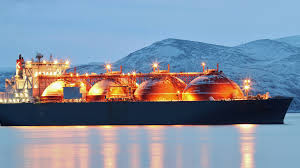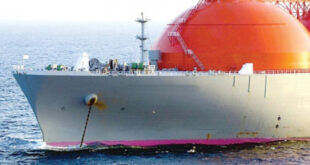The Nord Stream II gas pipeline from Russia to Germany and into the European network seems to be on course despite US pressure and challenges from Ukraine and other European countries. While all this is going on. construction of another pipeline is underway to supply Turkey and Europe with gas.
That is the Turk Stream pipeline. a project conceived in 2014 in the wake of the cancellation of the South Stream pipeline project due to EU objections. The memorandum was signed between Gazprom and Botas and finally approved by Russia and Turkey in October 2016.
The project comprises two undersea pipelines to deliver 31.5 billion cubic meters (bcm) a year. with the first line expected to supply Turkey while the second is intended for European consumers. The offshore section is over 900km from Anapa on the Black Sea to Kiyikoy on the Turkish seaboard close to the Bulgarian border.
Onshore works in Russia and Turkey are also extensive to ensure gas supply and transmission to intended destinations by end 2019 at a cost of €11.4 billion (Dh47.94 billion).
The Turkish market for gas has grown rapidly from 35.8- to 51.7-bcm from 2010-17. with potential for further growth as more cities and industries are connected to the network. All this gas is imported as Turkey hardly produces any of its own.
In 2017. Turkey imported about 14-bcm from Russia via the Blue Stream undersea pipeline. which started operations in 2005. Iran also supplied 8.9-bcm and LNG imports ran at 10.9-bcm. with other quantities coming from Russia through Ukraine and the Trans-Balkan pipeline. Turkish security of supply was improved further in June by the commissioning of the Trans-Anatolian pipeline (TANAP) running from Azerbaijan across the length of Turkey for export to other European countries as well.
The first Turk Stream line is destined for Turkey consumers while the flow from the second line is yet to find its way to other European countries. Russian gas has become so close that countries may overcome any obstacle to reap the benefit of a competitive supply.
The options available are many. A connector pipeline to Austria via Bulgaria. Serbia and Hungary or a link between Turkey and Italy via Greece. or to connect with the recently commissioned TANAP for an expanded supply to Italy by 2020.
While all these options are under consideration. Turkey can increase the flow in its existing pipeline to Greece to supply more than the current 6-bcm. Bulgaria is keen to connect to Turk Stream to satisfy its growing demand and aspire to be a regional gas trading hub. Supplies could emanate from different sources. including Turk Stream and the existing lines from Ukraine.
It recently decided to increase the capacity of the Trans-Balkan pipeline to capture whatever gas volume it could from Turk Stream. There is even talk about a direct sea line connection to the port of Varna in Bulgaria where a gas storage facility is to be found.
Bulgarian intent is receiving support from the EU. where European Commission vice-president Maros Sefcovic recently said: “Diversified gas supplies to Bulgaria and the region of south-east Europe are of utmost importance to a successful energy union. as energy security is one of its five pillars.“
US opposition to the Russian plans. especially with respect to Nord Stream II. is basically centred around protecting Ukraine’s position as an importing and transit country for Russian gas and the enormous transit fees that it receives.
Reports that Russia aims to bypass Ukraine completely do not stand up to scrutiny. The capacity of the Russian Projects bypassing the Ukraine — Nord Stream I and II and the lines to Turkey — add up to 158-bcm a year and at 85 per cent availability would be 134-bcm a year only. Assuming Russian exports to Europe at 190-bcm a year. this would mean that about 54-bcm a year would still pass through Poland and essentially Ukraine. down from the current 90-bcm a year.
That is why the European Union is attempting to broker an agreement between Moscow and Kiev to keep the gas flowing across Ukraine when the current transit contract ends in 2019. The pipelines through the Ukraine are also old and in need of more maintenance. The new routes would thus be beneficial to the security of supply to Europe rather than against it.
Politics may still enhance the chances of US LNG to Europe. especially if the US helps some countries with investment in terminals and other infrastructure. But there is no way that will make US LNG competitive with Russian gas. and only the future would tell how much US LNG is imported by Europe from the 2 million tonnes in 2017.
 Iran Energy News Oil, Gas, Petrochemical and Energy Field Specialized Channel
Iran Energy News Oil, Gas, Petrochemical and Energy Field Specialized Channel




